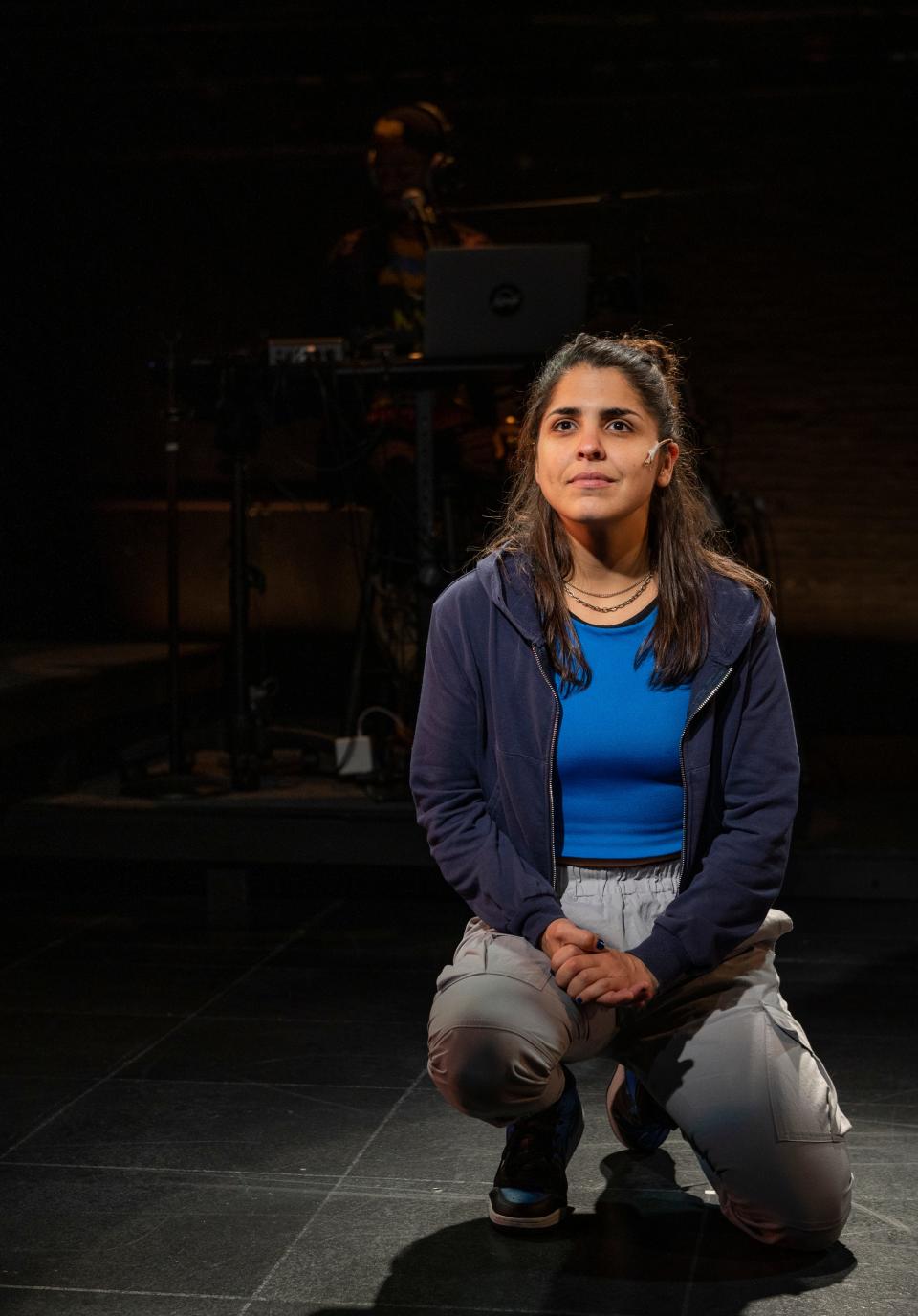An immigrant's child embraces the American Dream in 'Where Did We Sit on the Bus?'
No one understands the American Dream like immigrants and their children.
As a dirt-poor youth in rural El Salvador, Bee Quijada's father didn't get his first pair of shoes until he was 15. So he and Bee's mother immigrated to the United States so Bee and her siblings could have a better life filled with marvels like Challah French toast, MTV and skin-tight "Cats" costumes!
"Where Did We Sit on the Bus?," produced by Milwaukee Chamber Theatre, is a coming-of-age story, a growing-up-brown-in-America story and a becoming-a-performer story, all flowing out of the words and movements of Isa Arciniegas, who plays the irrepressible Bee. Directed by Brent Hazelton, it continues through Oct. 23.
Playwright-performer Brian Quijada based this one-actor show on his own life story, but the role has also been played by women with almost no changes necessary.
Switching fluidly from speaking to rapping to singing, Chicago-based performer Arciniegas almost never stops moving as she shares episodes in Bee's life from before birth to adulthood. On a nearly bare stage, her foil is music director Kellen "Klassik" Abston, who performs and triggers his original score on keyboard and other devices. He also interacts gracefully with Arciniegas as Bee from time to time. Jason Fassl's lighting design is nearly a third character, helping Arciniegas in transitions and illuminating Bee's moods. In the smallish Studio Theatre, this production often feels more like a club show than a play, especially when Arciniegas is holding the mic.

The title comes from young Bee's question to a third-grade teacher after a lesson about Rosa Parks. Teacher dodges the query, but Bee continues to process what her identity is. She's initially crestfallen to learn her family name, Quijada, means "jaw." But then, in one of my favorite moments of the show, she raps a killer monster tale with Eminem-type ferocity about the first Quijada, who crushes and devours his tormentors with his massive jaw.
Michael Jackson becomes Bee's dancing hero; we get to see Arciniegas moonwalk (stage movement directed by Cedric Gardner). But she also notices how MJ's skin changes over time: "I keep thinking that there I sit, a brown kid, who wants to be a Black kid, who wants to be a white kid." Still a young girl, Bee already grasps the difference between the art and the artist, and has compassion for the human struggles of the latter.
Her immigrant parents, especially her father, are perplexed by her desire to become a performer, when she could have a good life as a bilingual doctor, lawyer or engineer. Quijada's script portrays the parents fairly and kindly; Arciniegas deftly shows us these charged conversations.
"Where Did We Sit on the Bus?" builds to a litany that's stunningly Whitmanesque, as the relentlessly optimistic (to use Abston's phrase) Bee claims identity with everyone and everything she sees. The beauty of this show is that it's specifically about one child of Salvadoran immigrants, but that it's also so all-American.
Contact Jim Higgins at jim.higgins@jrn.com. Follow him on Twitter at @jhiggy.
If you go
Milwaukee Chamber Theatre performs "Where Did We Sit on the Bus?" through Oct. 23 at the Broadway Theatre Center, 158 N. Broadway. Visit milwaukeechambertheatre.org/bus or call (414) 291-7800. Note: MCT is requiring audience members to wear masks during these performances.
Our subscribers make this reporting possible. Please consider supporting local journalism by subscribing to the Journal Sentinel at jsonline.com/deal.
DOWNLOAD THE APP: Get the latest news, sports and more
This article originally appeared on Milwaukee Journal Sentinel: A brown child pursues American Dream in 'Where Did We Sit on the Bus?'

